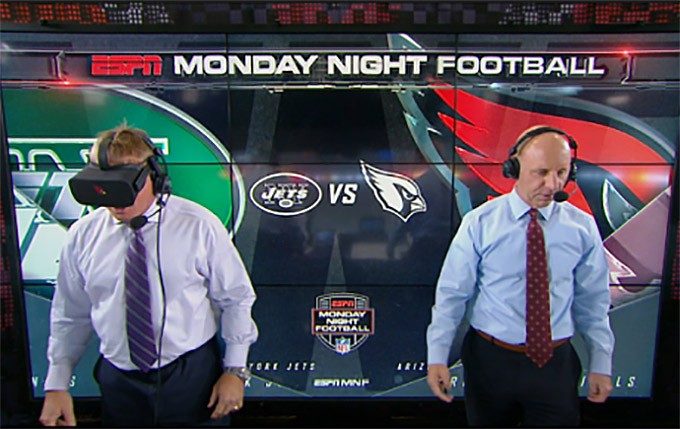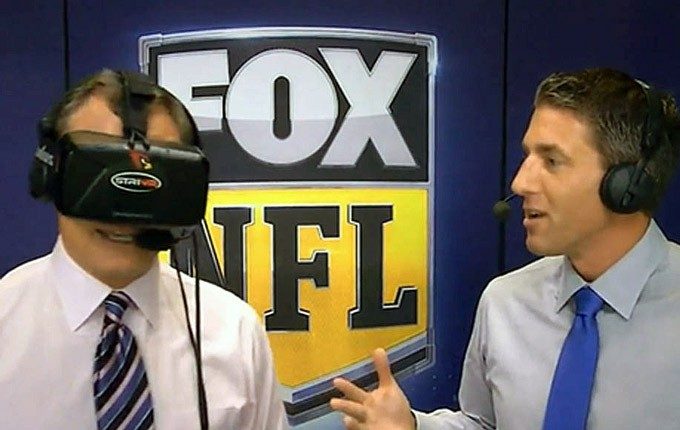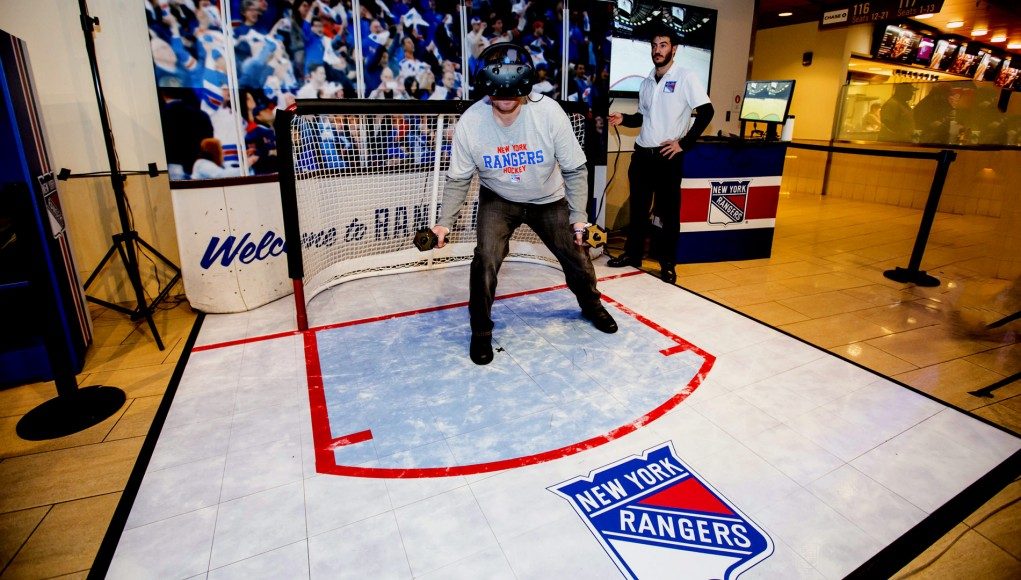With industries outside of entertainment expected to account for the majority of virtual reality industry revenues, the question of utility seems ever-pressing. How can virtual reality transcend novelty into utility and become truly useful?
It’s a question that STRIVR Labs CEO Derek Belch has been asking himself since 2007 when the former Stanford Cardinal kicker took a class about virtual reality from Jeremy Bailenson, the head of Stanford’s Virtual Human Interaction Lab (VHIL).
Belch realized the potential of VR for sports training and spent two years working with Bailenson to develop and troubleshoot an effective way to film Stanford Football’s practices in 360-degree, immersive video allowing players to rewatch practice film using a VR headset. And what started as a leg up for the Stanford football team became his career.
“We’ve chosen to go the way of asking: What are the problems and how can this help?” says Belch. “I think the entertainment stuff is really cool and some of the gaming experiences are incredible, but how big is that market outside of a gaming community? We’ll find out. I think the utility applications where VR actually makes a lot of sense are the winners in the long term.”

And so far, his approach seems to be working. Fast forward to 2016 and STRIVR Labs counts the likes of Texas Tech, Arkansas, Stanford, Dallas Cowboys, and Arizona Cardinals, among others, as clients using STRIVR’s VR solutions to enhance training. STRIVR has continued to work with NBA, MLB, and NHL franchises and their corporate partners at different games using virtual reality.
STRIVR’s approach capitalizes on the oft-unacknowledged mental workout of football: memorizing plays and repeating them in perpetuity until they stick. Where repeating plays on the field becomes physically and mentally exhausting, as well as time consuming, STRIVR’s approach puts players in a headset for between two and fifteen minutes. In five minutes, a player can get as many as 40 additional reps of a seveon-second play that they wouldn’t get on the field.
And while training football players might still technically fall under the umbrella of entertainment and not utility, STRIVR has extended its reach into training the employees of an anonymous international retailer. This move suggests greater potential for expansion into many industries that necessitate repetitive mental training and memorization.
“[Training employees is] not unlike what a football team faces, where there’s only so much time to give people reps,” says Belch. “You have to teach to have them prepared to play. It’s just a different type of play with an everyday job versus a game.”
Belch will further explore his company’s approach to the business of VR at his session “From NFL to Walmart: How to Use VR to Grow Your Human Capital” on November 2 at the 2016 Virtual Reality Strategy Conference.

The high stakes of working with large corporations and football giants means STRIVR is constantly searching for the best technology for the job. Belch considers his company “agnostic” as far as allegiances to specific platforms. STRIVR has used HTC Vive, Samsung Gear, the Oculus CV1 and Oculus DK2 headsets.
“For us the cost of failure is really high,” says Belch. “If something fails, the teams think it’s our fault when it probably isn’t. We try to be smart about what hardware we deploy and where.”
But the challenge for STRIVR lies mainly in filming VR footage from the field and getting intimate shots of plays for VR reproduction.
“As far as actually doing this stuff on site, it’s not easy,” Belch says. “This is not like computer or cell phones right now where you just beam it out to people and everybody owns it. You actually have to put it in front of people.”
But Belch says that is something STRIVR has succeeded in doing.
“Out of the 20,000 plays we filmed last year, those plays were watched 50,000 times,” he says. “These are real paying customers and real players actually using VR for utility.”
Road to VR is a proud media sponsor of the 2016 Greenlight Virtual Reality Strategy Conference.







